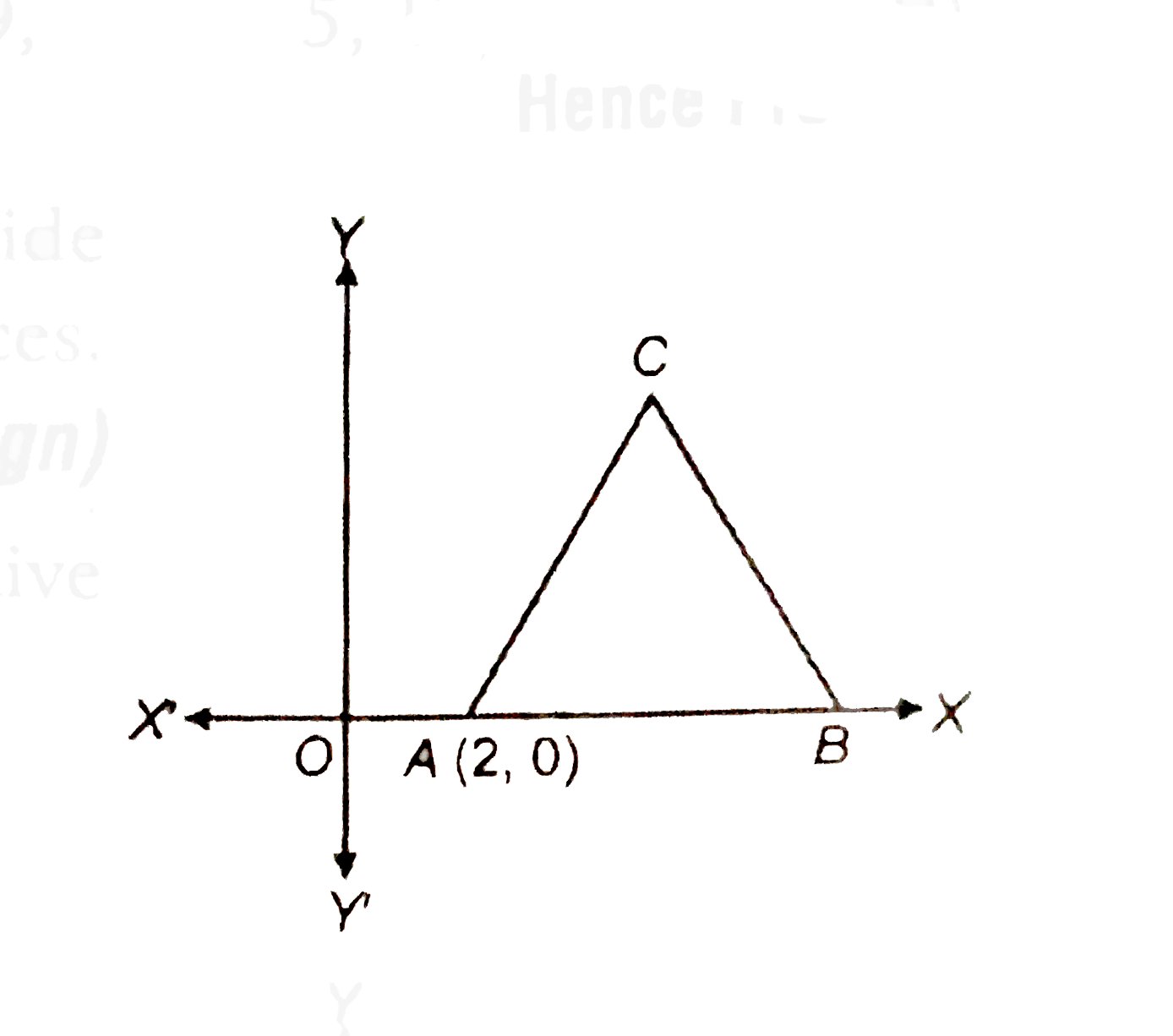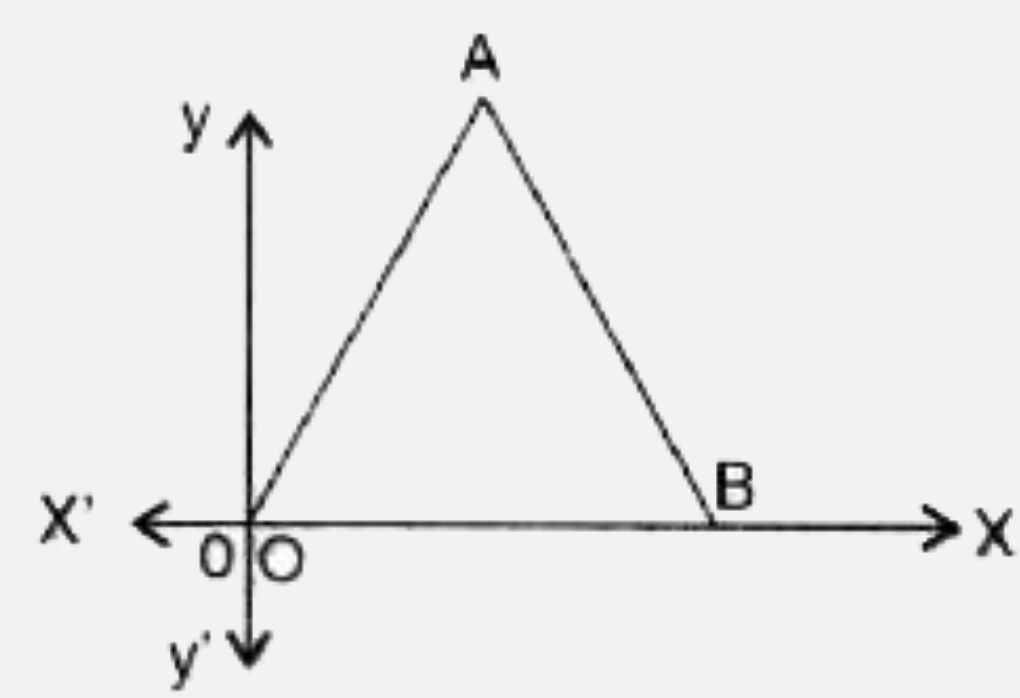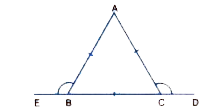In the given figure, ΔABC is an equilateral triangle of side 3 units. Find the coordinates of the other two vertices.

Since B is at a distance of 3 units from A on X- axis in the positive direction. So B will be 5 units away from the origin.
So, B≡(5,0)
Let M be the mid-point of AB
∴ AM=12AB=32 units
Also AC=3units
∴ In right ΔCMA, by Pythagoras theorem
CM2=AC2−AM2
=9−94=274
∴ CM=√274=3√32
So, the coordinates of C are (OM, MC)
⇒ C≡(OA+AM,MC).
⇒ C≡(2+32,3√32)≡(72,3√32)

Topper's Solved these Questions
- CO-ORDINATE GEOMETRYBOOK - NAGEEN PRAKASHAN ENGLISHCHAPTER - CO-ORDINATE GEOMETRYEXERCISE - Miscellaneous Examples
8 Videos
- CO-ORDINATE GEOMETRYBOOK - NAGEEN PRAKASHAN ENGLISHCHAPTER - CO-ORDINATE GEOMETRYEXERCISE - Problems Of NCERT/exemplar
14 Videos
- CIRCLESBOOK - NAGEEN PRAKASHAN ENGLISHCHAPTER - CIRCLESEXERCISE - Long Answer Questions
2 Videos
- CONSTRUCTIONSBOOK - NAGEEN PRAKASHAN ENGLISHCHAPTER - CONSTRUCTIONSEXERCISE - Exercise 11 B
10 Videos
Similar Questions
The given figure shows an equilateral triangle OAB.
If AB =2a units , find the co-ordinates of the vetices.

View SolutionIn the given figure, ΔABC is an equilateral triangle whose side BC has been produced in both the directions to D and E respectively. Prove that ∠ACD=∠ABE.

View SolutionFind the altitude of an equilateral triangle of side 8 cm.
View SolutionFind the perimeter of an equilateral triangle of side 13 cm.
View SolutionFind the area of an equilateral triangle whose side is a cm.
View SolutionThe side of an equilateral triangle is 3.5 cm. Find its perimeter
View SolutionEach side of an equilateral triangle measure 10 cm. Find the area of the triangle .
View SolutionThe two opposite vertices of a square are (1, 2) and (3, 2). Find the coordinates of the other two vertices.
View SolutionThe two opposite vertices of a square are (1,-6)and (5,4). Find the coordinates of the other two vertices.
View SolutionIf (-4, 0) and (4,0) are two vertices of an equilateral triangle, find the coordinates of its third vertex.
View Solution
